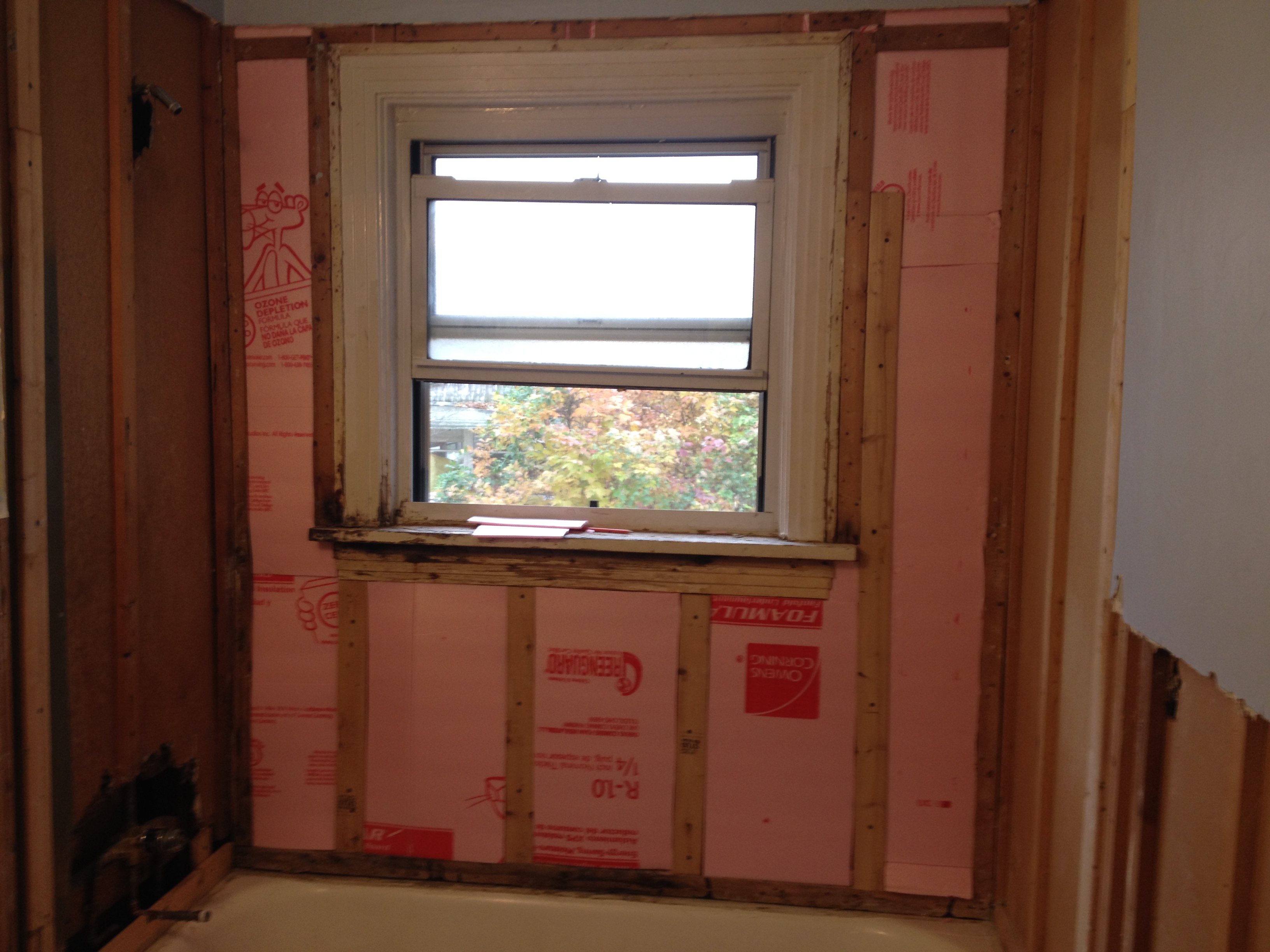Insulation Materials for Bathroom Exterior Walls

Bathroom exterior wall insulation – Insulating bathroom exterior walls is crucial for maintaining a comfortable and energy-efficient space. The choice of insulation material depends on factors such as thermal efficiency, moisture resistance, and durability.
Bathroom exterior wall insulation is a crucial aspect of home design, ensuring comfort and energy efficiency. For those seeking a minimalist aesthetic, minimalist home design offers a harmonious blend of simplicity and functionality. The clean lines and uncluttered spaces of a minimalist home naturally complement the understated elegance of exterior wall insulation, creating a cohesive and aesthetically pleasing abode.
Types of Insulation Materials, Bathroom exterior wall insulation
- Fiberglass: Fiberglass insulation is a cost-effective option with high thermal efficiency. However, it can absorb moisture, reducing its effectiveness.
- Cellulose: Cellulose insulation is made from recycled paper and is highly absorbent. It provides good sound insulation but requires careful installation to prevent moisture issues.
- Polystyrene: Polystyrene insulation is lightweight and water-resistant, making it suitable for bathrooms. It has good thermal efficiency but is less environmentally friendly than other options.
- Spray Foam: Spray foam insulation creates an airtight seal, providing excellent thermal efficiency and moisture resistance. However, it is more expensive and requires professional installation.
Installation Methods for Bathroom Exterior Wall Insulation

Installing insulation on bathroom exterior walls is a crucial step in maintaining the bathroom’s comfort and energy efficiency. The process involves applying insulation materials to the exterior surfaces of the walls, which helps regulate temperature, reduce heat loss, and prevent moisture penetration.
The installation methods for bathroom exterior wall insulation vary depending on the type of wall surface, the insulation material used, and the specific construction techniques employed. Here are some general steps to guide you through the process:
Surface Preparation
Before installing insulation, it is essential to prepare the wall surfaces. This involves removing any existing siding, trim, or other coverings to expose the bare wall. The surface should be clean, dry, and free of any debris or imperfections that could affect the adhesion of the insulation.
Insulation Application
The insulation material is then applied to the wall surface using appropriate fasteners or adhesives. The type of insulation used will determine the specific installation techniques. For instance, rigid foam insulation boards are typically attached using screws or nails, while spray foam insulation is applied directly to the wall surface using a specialized sprayer.
Sealing and Vapor Barrier
Once the insulation is installed, it is crucial to seal any gaps or joints to prevent air and moisture infiltration. This can be done using caulk, sealant, or weatherstripping. Additionally, a vapor barrier should be installed over the insulation to prevent moisture from penetrating the wall assembly and causing damage to the insulation or the interior of the bathroom.
Benefits of Bathroom Exterior Wall Insulation

Bathroom exterior wall insulation offers a range of advantages that contribute to enhanced energy efficiency and improved indoor comfort.
One significant benefit is its role in reducing heating and cooling costs. By providing an additional layer of insulation, it prevents heat loss during winter and heat gain during summer. This reduction in thermal transfer translates into lower energy consumption, leading to savings on utility bills.
Improved Indoor Comfort
Insulating bathroom exterior walls also improves indoor comfort levels. It helps maintain a consistent temperature throughout the space, eliminating cold spots and drafts that can cause discomfort.
Furthermore, insulation plays a crucial role in preventing condensation and mold growth. Condensation occurs when warm, moist air comes into contact with a cold surface, leading to moisture buildup and the potential for mold formation. Insulation creates a barrier that reduces the temperature difference between the interior and exterior surfaces, minimizing the risk of condensation and the associated health hazards.
Case Studies
Numerous case studies demonstrate the effectiveness of bathroom exterior wall insulation in enhancing energy efficiency and indoor comfort.
For instance, a study conducted by the U.S. Department of Energy found that insulating bathroom exterior walls reduced heating costs by up to 20%. Another study by the Insulation Institute showed that insulation reduced indoor temperature fluctuations by up to 10 degrees Fahrenheit, significantly improving comfort levels.
Bathroom exterior wall insulation is crucial for maintaining a comfortable indoor temperature and preventing moisture damage. While the exterior of your bathroom may not be the first thing that comes to mind when considering unique interior design, it’s an aspect that can contribute to the overall aesthetic of your home.
Unique interior design extends beyond the walls of your bathroom, influencing the exterior as well. By incorporating thoughtful design elements into your bathroom’s exterior wall insulation, you can create a cohesive and visually appealing space that complements the interior.